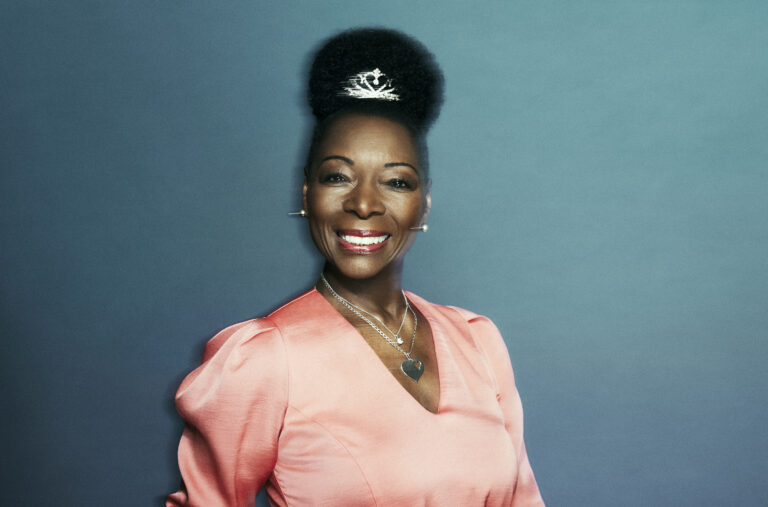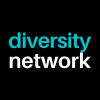“Do unto others as they would like to be done unto. Not do unto others as you would like to be done unto yourself.” Stuart Sherman, CEO, BiasProof
We were proud to name BiasProof as one of our sponsors for INCLUSION 2021, and Diversity Network sat down with two of the company’s representatives.
Stuart Sherman is the CEO of BiasProof and a successful serial tech entrepreneur who is focused on positive social change. Stuart has always been fascinated with the psychology of culture and change management, and at university studied managerial sciences, specifically behavioral economics and organizational behavior. He went on to found one of North America’s early digital agencies before the internet was a household service; later, he began BiasProof with a specific goal of not being, in his words, “the next unicorn startup”, but rather a catalyst for meaningful change.
Stuart is also involved in founding several other startups including Banking for the Disadvantaged and the democratization of knowledge.
Dr Stuart Flint is lead psychologist and President of Scaled Insights at the company. He is also Associate Professor of Psychology at the University of Leeds, and an honorary academic for Public Health England (soon to be the Office of Health Improvement and disparities). He has a specific interest and expertise in unconscious bias, and the processes that influence behavior, stigma and discrimination. Dr Stuart has developed interventions to reduce stigmatising attitudes and discriminatory behaviours working with local and national governments, health systems, education, media, charities, and the general population.
Q: On BiasProof’s website it declares: “We are all born and raised with biases. It’s not your fault. We believe that all people would like to be better people and that people are fundamentally good. The problem we have is that we are unaware of the biases we may have.”
Why is removing blame or guilt important for discussion about bias?
STUART SHERMAN: “I think one of the problems that we have in the world today is that we have people who are very willing to address the issues around social change. And we have people who are very resistant to those issues. It varies by country and even by region. It’s very evident when you look at politics and people who support different political movements. But fundamentally, I think that all people are good. I remember having this argument with a friend of mine, who lives in San Francisco, and we’re talking about homelessness. And he was very frustrated. And I was very frustrated. And we both agreed that homeless people shouldn’t be on the street. And yet his approach to dealing with it because he was a Republican-leaning person was very specific, and had a very specific party line. Whereas I’m a Canadian and a socialist. I stopped us in the middle of this conversation, I said, ‘You know, what, can we just both agree that we feel for these people, and we think that we need to solve the problem?’ And he said, ‘Absolutely’.
And I think that this is one of the challenges that we have, where because of the language we use to describe the problem, that language can actually alienate other people. Some language that seems useful can be alienating. One of the things that we have to do is we have to remove the blame and the shame. And one of the challenges I think that exists with diversity and inclusion in general is that we have this cultural inertia, that many boardrooms are made up of white men.
We have to accept the fact that there’s a diversity of thought around inclusion. I heard a great line from another Stuart of Adam & Company bank in the UK [Stuart Dickson, Executive Director]. And he doesn’t like the golden rule: Do unto others as you would like to be done unto yourself. He says, that’s incorrect, you should do unto others as they would like to be done unto.”
DR STUART: “Removing blame or shame is certainly front and center of our message. Ultimately, we’re developing biases, both conscious and unconscious, because it’s natural. It’s natural, because we’re receiving thousands of messages every day from our environment, a lot of different sources, which could be family and friends, the media, political messages, and so on. Some of these messages we are not even aware of and yet we’re developing biases as a result.
What we should also mention is that some biases, of course, are positive. But it’s the negative ones that we’re focused on in terms of what we need to raise awareness around, and what could address the issues that we’re facing in terms of inclusion, diversity, and equality.
And the other point is that our implicit biases often reflect the environments that we live in. It’s not that people or groups of people are going out of their way to develop unconscious biases against a certain group or subgroup of the population. Actually, those biases often reflect the environment that we live in, and they reflect the messages that we were receiving, again, continuously and consistently, possibly on a daily basis, that may lead to a bias against a certain group.
That for us is one of the key reasons why it’s really important that we don’t blame, we don’t shame, because these biases are being developed naturally. But we also need to recognise that it’s important to become aware of those biases, and to take appropriate steps to be able to address them, whether that’s in the workplace, or elsewhere within our society.”
Q: BiasProof’s technology is based on the Harvard Implicit Bias standard, and some of your team work with the experts at Harvard who developed the idea. Can you tell us more about how BiasProof has applied this to the workplace and your ‘Personal Bias Score’ system?
DR STUART: “As you mentioned, we’re very aware of the test that Harvard developed, which is the Implicit Association Test, and that has been around since 1998. But we’ve also been aware of some of the limitations when wanting to use the tool in different types of settings, including the workplace, which we see as a key setting for addressing both conscious and unconscious biases. People who are working will typically spend up to 75 per cent of their waking time in the workplace.
What we’ve ultimately developed is a rapid, easy to use, mobile version for the workplace so people can open the test on their phone, or on an iPad, or a tablet or mobile device, and which will recognize what type of device it is, so it will resize and reshape, and people will be able to take the test very quickly, very easily. It’s a short version of the test.
And we’ve got a range of different types of tests now such as tests for implicit biases relating to gender, ethnicity, disability, and weight status. We have further tests under construction, including tests for biases relating to mental health, for instance. We’ve been using this with a number of different sectors, with healthcare, with organisations involved in finance, and so on.
The ability to complete a test on a mobile device is something that individuals and companies really favor. What’s really key from our perspective, is that when people complete the test, their results are very much personal to them. Nobody else will ever see their test scores and it’s totally up to the individual what they want to do with their results. Their result will not be shared elsewhere: we actually have no way of tracking and identify who has completed the test.
What we can do is identify what would be an aggregated score for an organisation or a workplace, to identify what potential biases exist for a group of individuals. For instance, we could potentially do some work with an organisation to identify that a certain percentage of their workforce had a bias towards one of the groups that we are ultimately studying. Personalisation is also key.
What has also been an issue with tracking in implicit biases previously has been an inability to track over time. And that’s something that we’ve been addressing at BiasProof because at some point people want to know if they’re developing effective training to address implicit biases.”
STUART SHERMAN: “There’s a great line that Alcoholics Anonymous have used for nearly a century now: first you have to admit you have a problem. And the challenge is that because these biases are unconscious, you may be completely unaware. And you’re likely unaware of these unconscious biases because it’s a process happening ‘under the hood’, or ‘under the bonnet’, to use words that neuroscientists use, such as David Eagleman.
If an organisation wants to get people to change, you have to start by taking the unconscious and becoming conscious of it. If you imagine you’re a teenager arriving at school, and you’re wearing something that’s unfashionable, your friends will tell you, and you will become conscious of it. And then through peer pressure, you will desire to change. As adults, we start to become conscious of our weaknesses. And as we become conscious of them, we work on them.
With unconscious bias, you could be sitting in a classroom or a training room that your corporation has. And you don’t think there’s a problem. You’re not really paying attention because you think it’s not my problem, it’s somebody else’s. That’s a huge issue.
The other issue is around measurement. Peter Drucker came up with a line ‘if you can’t measure it, you can’t manage it’. And so corporations typically want to measure things. And the issue with unconscious biases is that it’s not like you take a bunch of people, and you put them in a room and you teach them how to add. And then you give them a test at the end, and you say, ‘what’s two plus two’, and everybody says ‘four’, and you say, ‘OK, everybody passed’. Unconscious bias isn’t like shifting gears where you’re told you have these biases, you deal with them or people differently and immediately afterwards you’re a changed person. It’s a journey. The ability of the company to test and then test again, and train and test, again, is the ability of BiasProof. If you can get a score to see that your efforts are moving in the right direction, that’s when change will happen.
One of my concerns is the hype cycle concept, which exists for most things in the world, where they become very, very exciting, and everybody jumps on the bandwagon. And then the they don’t necessarily deliver as well as they could. And they don’t deliver in measurable ways. And therefore corporations start to cut back on it.
So the worry is that we have this organisational spend but some organisations aren’t going to deal with unconscious bias because they can’t figure out that they’re moving the needle. Our biggest concern is that how do D&I professionals help organisations change if they can’t be proving to upper management that the spend is justified and it’s working.
We’re melting glaciers, we’re not chipping ice here. It’s not like you can just package unconscious bias up. What will get D&I longevity inside of corporations is the ability to test and retest your people every quarter, or every six months to get a score to show that the effort is paying off.”
And if not, it’ll be a flash in the pan, like so many other things. Now who knows how long the flash will last? Three years? Ten? But if you think about all of the other things that were en vogue in managerial science in the 80s, or in the 90s, they’re gone now. So how do we keep D&I in the corporate office and in the boardrooms?
It’s very difficult to change behaviors like this that are these ingrained behaviors through shame. We’re seeing this play out around the world with politics and people’s attitudes towards D&I.
The challenge is that as when we shame people, we tend to put their backs up and they will double down: the more you squeeze someone the more they entrench. There have been studies done to prove this, and we see this in the United States with the election deniers.
We remove that by giving you your score personally, but not sharing it in the corporation. And besides, it’s a thoughtcrime: you may be biased in a certain direction but that doesn’t necessarily indicate that that is your behavior. Because if you’re conscious of it, then you could overcorrect.
A great example is actually in our corporation. We recognise that we have processes that are inherently biased, because of the nature of humans. So if a man and a woman submits a resume, the men tend to overstate, and women tend to understate. We have is a rule that if the female candidate is almost as good, or even close to, the man, we will interview them anyway.
We can’t necessarily change biases completely. But we can try to remove biases from processes. And it’s this kind of thinking that if you acknowledge that you have the bias, then you’re more willing to say, OK, what could we do to remove it. Assuming you’re a good person, and I assume that 90 something percent of all humans don’t wake up in the morning trying to be bad. We all want to think of ourselves as positive and good.”
Q: What about the BiasProof certification?
STUART SHERMAN: “We have a BiasProof certification and badge for both individuals and organisations. This comes from an experience that I’ve had, which is a strange one.
I race cars and I teach people how to race cars. Generally speaking, I get a student at the beginning of a weekend who has never been on a track before, and they ask you all sorts of questions including ‘Oh, you must speed a lot and drive really aggressively on the highway’. And I say ‘No, because I’m a racecar driver, I don’t’. I tell them that they’re going to have an experience that weekend that’s going to make them into a bit of a racecar driver. They’re going to realise that there’s nothing they can do on the highway that will that will match the experience they’re going to have here. And therefore they’re not going to try to match that experience on the highway. And at the end of the weekend, they say ‘You know what, I’m a racecar driver’. And if I see the person coming back for another weekend, they’ll always tell me that they’ve driven more calmly and sedately and more responsibly after having the experience because they view themselves as a racecar driver.
What we’re trying to do with a BiasProof badge is we’re trying to say, ‘Look, it’s a journey, it’s not a destination’. What you’re doing is you’re acknowledging the fact that your company is on a journey, and the public statement of that is something that reinforces itself, and people can get behind. They will believe that if their company does this, they should do this. They brand themselves. We as humans don’t like being hypocritical: if you make this public statement, then it becomes part of who you see yourself as.
We’re actually working to get the BiasProof badge right now that you can put on LinkedIn. We’re working to create opportunities for people to say they’re on this journey, because that in itself is a commitment towards positive change.
The challenge is that if you sit in the classroom or go through a course or do something that’s passive, it can be very useful, but it’s over and then you get back to the busy work and life. But if you state you’ve taken the BiasProof course, it’s something that you now carry with you. And we’re looking for how we have a measurable impact. And it’s measurable because you’ve got a score. And it’s measurable because you changed.”
Q: What about unconscious bias during recruitment?
DR STUART: “From a research perspective, there is ample evidence that tells us that there are biases that occur in the recruitment phase. On CVs or cover letters, but also in the interview phase itself. So, some of the visual biases that people may well have, which could be for instance, about somebody’s ethnic background, somebody’s appearance, somebody’s body size or shape.
There’s a lot of research out there that tells us people may act in a in a biased way, which means that people are potentially overlooked for work for employment because of these biases, even when a person is highly qualified for a role. We certainly know from an empirical evidence perspective and from research evidence that biases are impacting people’s applications into employment.
We see that across different sectors and there are certain sectors where this may be playing out more. In sectors where, for instance, traditionally, it’s been a sector where more males will be in that type of workplace compared to females, or alternatively, in other workplaces, where there may be more people who typically apply from a certain ethnic background.
There are workplaces that are addressing these biases. We know some organisations here in the UK have been removing certain types of demographics from applications such as age, for instance.”
STUART SHERMAN: “I think what’s interesting is the question whether it is it businesses or is it rule sets?
For example, I’m based in Canada, Stuart is based in in the UK, and we were hiring people in both places. And in Canada, it’s actually an illegal question to ask somebody their age during a job interview. So our organisation is now bringing that Canadian ethos over to the UK, which will solve problems.
It’s not about naming and shaming companies. It’s the attitudes inside divisions of the companies. And really, it can drill down to the individuals as well. One of the challenges is that we, by nature, gravitate towards people who are like us. When you think about your friends, they probably dress similarly to you. And they probably drive similar cars to you, and they were similar jewelry. There may be similar ethnic foods that you eat. We find that people cluster in neighbourhoods around ethnic supermarkets. This is this is natural.
When you start looking at it this way, you can see how during the hiring process, if you don’t have a sophisticated process in place, the manager who’s doing the hiring is probably going to hire somebody that they gravitate towards. That seems like somebody like them. And we see this as well with mentorship, where people tend to mentor people that remind them of them when they were young.”
Q: What does diversity and inclusion mean to you?
DR STUART: “People have different ideas of what diversity and inclusion means. And as a result, people are probably behaving in different ways in their in their attempts to try and address diversity and inclusion in their workplaces or elsewhere.
From our perspective there are different ways of achieving diversity: it could be through a number of different activities that could be done in a workplace, whether that’s diversity of thought into different types of activity or diversity in terms of individuals and groups who are contributing into different workplaces.
In certain instances people have looked for the easiest avenue moving forward, and that has held back our attempts at addressing diversity and inclusion in society. There are different schools of thought that we should really be pulling on in terms of taking these important steps forward in having a more diverse community, and in our workplaces having a more diverse contribution from different people.
That goes beyond even just having diversity in terms of people’s backgrounds or demographics, but diversity in terms of people’s thought process. I think that’s what’s going to move us forward in terms of addressing the issues of inequality that ultimately is evident throughout the structures of our society.”
STUART SHERMAN: “Diversity to me means an individual’s ability to empathise with others. When we look at the horrible crimes that are committed, and have been committed historically such as genocides, they always start with the dehumanisation of others, where other people are described as less than human, and that’s the removal of empathy.
To me, you could have a company that’s all male or female, or white, or black, or Muslim or Jewish, it doesn’t matter what it is, the question is, is it a group of people who can empathise? And if they can empathise with other people, and see them as different but equal, and want to have them around and see them as human beings, then we can have the beginning of change.
Right now, it’s not possible for any of these companies that are homogenous to just fire half their workforce and hire diversity. What they have to start with is empathy. If we can start with empathy, then there will be a period of time in the future that will create peace, it will create harmony, and it will allow us to live together and be happy and allow people to live each one’s best lives, according to how they see their best life to be. And you can also understand their challenges may not be your challenges. That’s the very act of empathy.”
Q: Why are you looking forward to running at workshop at INCLUSION 2021?
STUART SHERMAN: My feeling is that the challenge that most D&I people and people in the human resources space have is that they’re dealing with a variety of people: even if there are 10 people in your organisation, that probably means there’s three or four different personality types. My hope in our workshop is that we’ll be able to talk about this and talk about the challenges that people face and how we can help change language and change thinking to address this, because the real danger that we have is that it only works for a certain percentage of the people.
It’s the same challenge we have with COVID and the anti-vaxxers. We need to get enough people focused on diversity to make the movement work. And that means we have to get people who are not focused on this. We’ve all drunk the Kool-Aid, we believe we’re on this journey. And yet, there are a lot of people who aren’t. If we can bring them along with us, we can literally make the world a better place.”
DR STUART: “This is another opportunity to gather more information, more thoughts, and it’s increasing the diversity of ultimately what we know about this topic area. It’s an opportunity to engage with people to create meaningful change and meaningful action.
Ultimately, that’s what we’re here for, is to create meaningful change. And that requires collaboration to shift the needle.”





